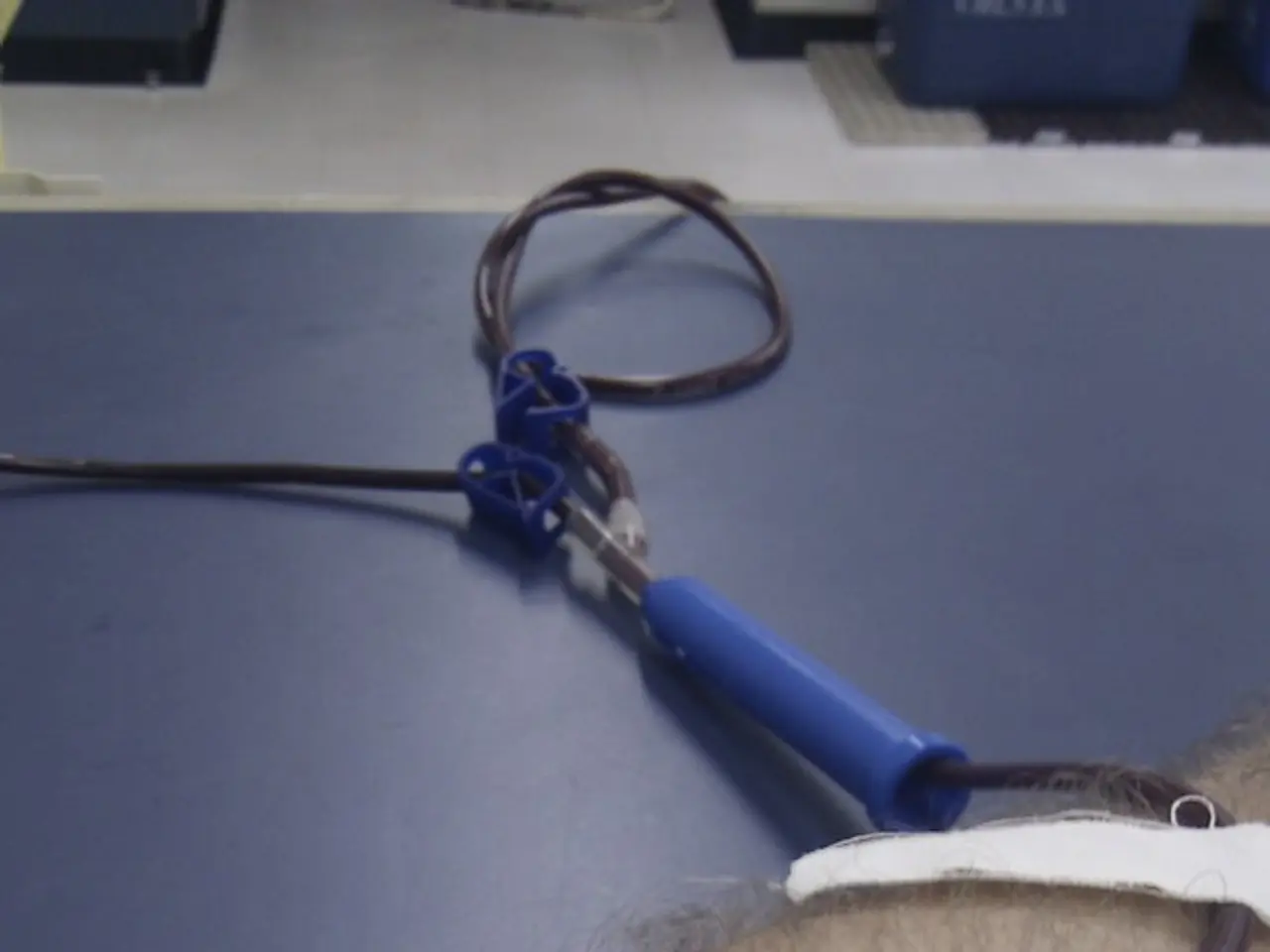Rare instance of Lemierre's syndrome, triggered by fusobacterium necrophorum, in a healthy individual
A 13-year-old girl presented to the emergency department with a severe case of Lemierre's syndrome, a rare and life-threatening condition that typically arises secondary to an oropharyngeal infection. The girl exhibited perioral edema, necrotic lesions with signs of inflammation, right cervical swelling, fever, and a progressive deterioration of her general condition in the context of a dental abscess.
Diagnosis of Lemierre's syndrome is confirmed via contrast-enhanced cervicothoracic CT imaging, which identified the presence of internal jugular vein thrombosis. The contrast-enhanced cervical computed tomography revealed a peritonsillar abscess associated with a mild narrowing of the pharyngeal lumen, and the contrast-enhanced thoracic computed tomography demonstrated a thrombosis of the right internal jugular vein. The microbiological analysis of the infected tissue samples identified Fusobacterium necrophorum, the primary pathogen associated with Lemierre's syndrome.
The diagnosis is further supported by the isolation of Fusobacterium necrophorum in blood cultures or from abscess or blood samples. Laboratory tests revealed lymphocytosis, a significantly elevated C-reactive protein level of 230 mg/L, and a procalcitonin level of 2 g/L.
Treatment for Lemierre's syndrome includes broad-spectrum antibiotics, often utilizing a third-generation cephalosporin or a beta-lactam in combination with metronidazole. Prolonged antibiotic therapy, typically 4 to 6 weeks, is necessary to achieve complete eradication of the infection and to prevent recurrence.
In select high-risk cases, anticoagulation may be warranted, and surgical intervention may be indicated in severe presentations of Lemierre's syndrome. The use of anticoagulants in the management of Lemierre syndrome remains controversial, although they may be beneficial in certain cases with extensive thrombus or high embolic risk. Surgical drainage may be necessary if abscesses develop, especially in deep neck spaces.
Because Lemierre's syndrome is rare, especially in children, and can progress rapidly to severe complications, early diagnosis and aggressive management are critical to improve outcomes. The current guidelines for diagnosing and treating Lemierre's syndrome in children and young adults emphasize a high index of suspicion based on clinical features combined with imaging and microbiological testing, followed by prompt antimicrobial therapy and supportive care.
Continuous monitoring and adaptation of treatment based on clinical response and microbiology results are essential. The differential diagnosis helps exclude various conditions with similar clinical presentations, such as infective endocarditis, chronic pulmonary infections, non-infectious jugular thrombosis, localized conditions like periamygdaloid abscesses, isolated cervical cellulitis, and polymicrobial septicemia. A significant elevation in inflammatory markers, such as CRP levels >150 mg/L, is commonly observed. Signs of organ dysfunction, such as hypoxemia or renal impairment, are frequently reported in advanced stages and correlate with worse outcomes.
Multidisciplinary involvement including pediatrics, infectious diseases, radiology, and sometimes surgery is recommended. Advances in molecular diagnostic techniques have improved pathogen detection rates, especially in cases with negative culture results. Polymerase chain reaction and next-generation sequencing have shown high efficacy in identifying F. necrophorum and associated polymicrobial infections.
Elevated CRP levels are a strong indicator of disease severity. The patient's condition improved significantly after 2 months of antibiotic therapy, with a normalization of the white blood cell count and a marked decrease in C-reactive protein levels. This case highlights the importance of early and aggressive management in the treatment of Lemierre's syndrome in children and young adults.





